Explorer-in-Training Program
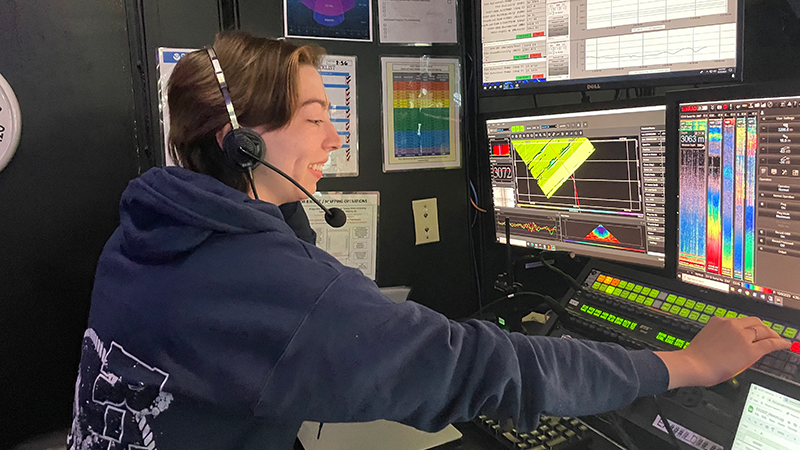
NOAA Ocean Exploration is dedicated to exploring the unknown ocean, unlocking its potential through scientific discovery, technological advancements, and data delivery. By working closely with partners across public, private, and academic sectors, we are filling gaps in our basic understanding of the marine environment. This allows us, collectively, to protect ocean health, sustainably manage our marine resources, accelerate our national economy, better understand our changing environment, and enhance appreciation of the importance of the ocean in our everyday lives.
With priority placed on exploration of deep waters and the waters of the U.S. Exclusive Economic Zone, NOAA Ocean Exploration applies the latest tools and technologies to explore previously unknown areas of the ocean, making discoveries of scientific, economic, and cultural value. By making collected data publicly available in increasingly innovative and accessible ways, we provide a unique and centralized national resource of critical ocean information. And, through live exploration video, online resources, training and educational opportunities, and public events, we share the excitement of ocean exploration with people around the world and inspire and engage the next generation of ocean scientists, engineers, and leaders.
A core part of the NOAA Ocean Exploration mission is to train the next generation of ocean explorers through internship and fellowship opportunities for students and early career professionals. One of the many ways that the office addresses this goal is through the Explorer-in-Training program, administered in partnership with the Cooperative Program for the Advancement of Earth System Science (CPAESS), a community program of the University Corporation for Atmospheric Research (UCAR), to coordinate opportunities to gain valuable experience in ocean exploration.
About the Explorer-in-Training Program
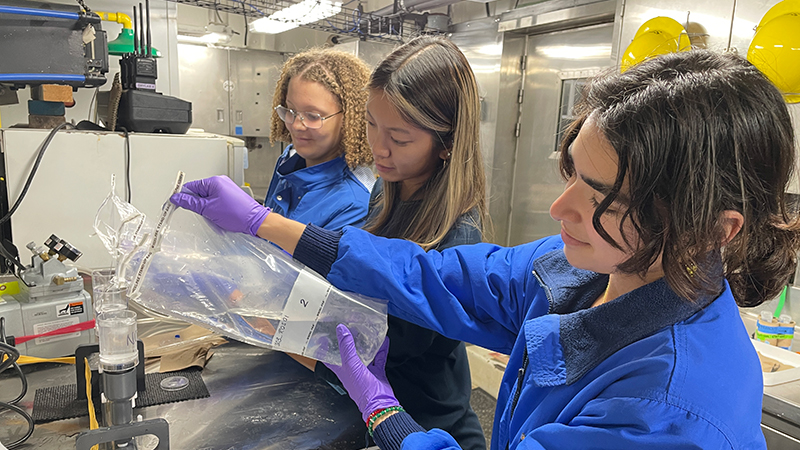
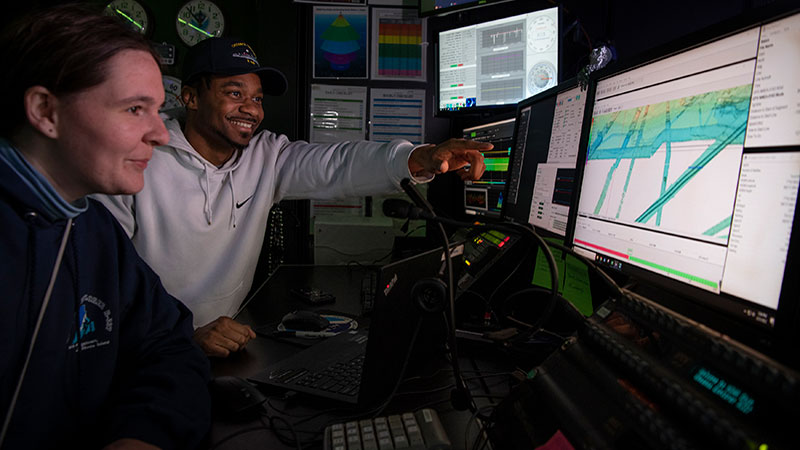
Since 2009, NOAA Ocean Exploration and UCAR CPAESS have hosted over 170 explorers-in-training. These interns gain valuable, interdisciplinary experience in ocean exploration while collaborating on office projects and expeditions. The program equips participants with skills to meet the current and future demands of the ocean exploration workforce by providing meaningful experiential learning opportunities that support NOAA Ocean Exploration’s mission, inspire ocean literacy for the next generation, and enable students to increase their competitiveness for educational and career opportunities in ocean-related fields.
The program features two internship options: (a) 10-week, summertime opportunities and (b) expedition-based opportunities. The 10-week internships provide students an opportunity to develop their skills and knowledge through long-term projects supported by NOAA Ocean Exploration mentors.The 2 to 4-week expedition-based internships involve participation in NOAA Ocean Exploration-supported expeditions aboard NOAA Ship Okeanos Explorer supporting seafloor mapping operations, giving participants the chance to contribute to mission efforts while gaining tangible skills that can benefit their future pursuits. Information about internship themes available during 2025 are listed in the Internship Themes section below.
In addition to working on projects and supporting expedition objectives, explorers-in-training participate in professional development workshops, conferences, and networking opportunities designed to teach key skills and expose students to career paths in ocean exploration. As part of the program requirements, explorers-in-training also produce a report detailing their project outcomes, and present their findings to office staff and collaborators at a virtual NOAA Ocean Exploration Internship Symposium at the end of their internship period. Together, the components of this internship program give students an opportunity to learn, explore, and contribute to the office in meaningful ways while sharpening their professional skills to ready them for their future pursuits in the ocean workforce.
Internship Themes
The Explorer-in-Training program offers multiple 10-week, summer internships and expedition-based opportunities, designed to reflect NOAA Ocean Exploration’s diverse and interdisciplinary expertise, work products, and services, and provide training in critical ocean exploration mission fields. See below for examples of past internship themes and projects. Please note that internship themes and projects may vary year-to-year depending on office priorities, mentor availability, and expedition schedules. Applicants may only apply to one internship theme per program year..
- Internship Period: 10-weeks, Summer 2025
- Virtual or in-person: Remote/virtual
- Stipend: $7,000 honorarium
This opportunity is for a graduate student to contribute to NOAA Ocean Exploration’s water column exploration activities. The water column, from the surface to the seafloor, is the largest and least explored habitat on the planet. Building on previous work by NOAA Ocean Exploration staff and former interns, the intern will annotate midwater remotely operated vehicle (ROV) video data collected onboard NOAA Ship Okeanos Explorer during the Atlantic Seafloor Partnership for Integrated Research and Exploration (ASPIRE) campaign. The goal of this internship will be to assist with the synthesis of water column exploration data, including quality assessment and quality control, analysis, and development of data visualizations for ROV video annotations, water column acoustics, and environmental data.
Key activities and learning outcomes:
- Analyze video, environmental sensor, and water column acoustic data (EK60 and EK80) for NOAA Ocean Exploration’s water column ROV dives conducted in the Atlantic Ocean.
- Use video annotations to create an inventory of all species identified during NOAA Ocean Exploration’s water column ROV dives in the Atlantic Ocean for the ASPIRE campaign.
- Determine biodiversity metrics (i.e. abundance, species richness) for water column fauna within the Atlantic Ocean based on NOAA Ocean Exploration water column data and how those may correlate with geographic and/or environmental features.
- Communicate internship outcomes through written reports and oral presentations, including at the 2025 NOAA Ocean Exploration Internship Symposium.
- This will be a remote, virtual internship, using video conferencing to communicate with mentors. Opportunities for professional development include workshops, seminars, conferences and publications.
This opportunity is ideal for:
- Graduate students or someone who has recently completed a graduate-level degree.
- Applicants with a background or interest in biology, oceanography, and using R programming language for basic statistics.
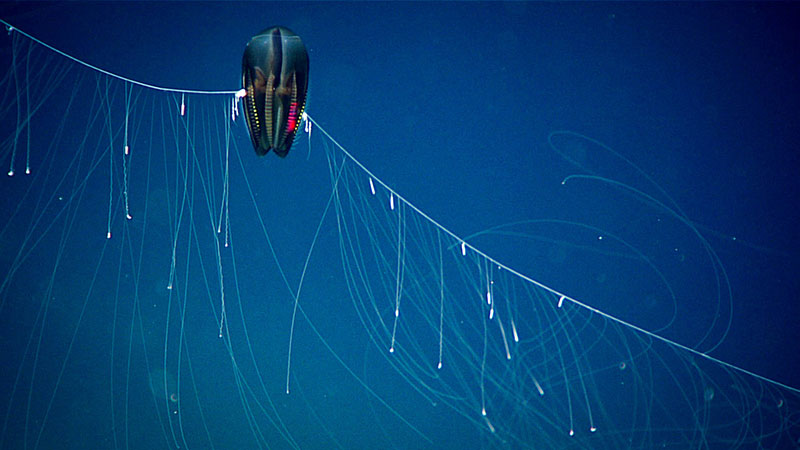
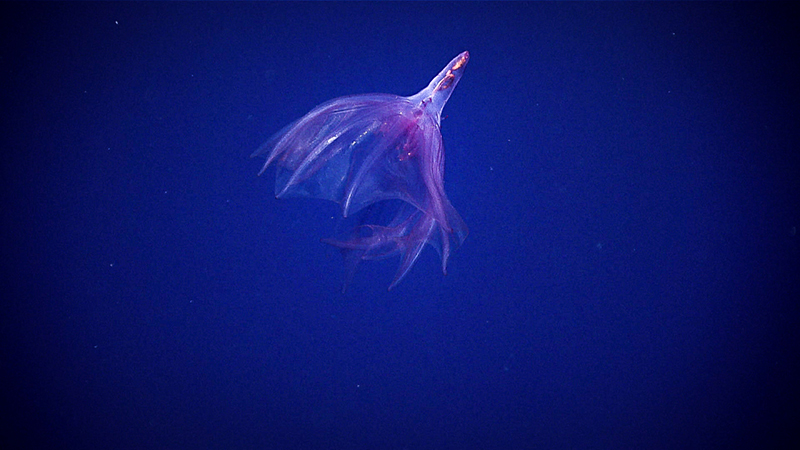
- Internship Period: 10-weeks, Summer 2025
- Virtual or in-person: In-person at Smithsonian National Museum of Natural History (Washington, D.C.)
- Stipend: $7,000 honorarium plus $6,000 housing allowance and travel reimbursement for relocation
This opportunity is to learn and contribute to NOAA Ocean Exploration’s ‘Omics priorities. Environmental DNA (eDNA) samples are routinely collected on the NOAA Ship Okeanos Explorer and are processed for sequencing at the Smithsonian Institution National Museum of Natural History (NMNH). Two interns will be selected for this opportunity. Under the supervision and guidance of NOAA Fisheries and NMNH staff, the interns will contribute to genetic sample processing through eDNA extraction and amplicon sequencing preparation to create metabarcode profiles. There will also be opportunity for the interns to contribute to the development of the NOAA Ocean Exploration eDNA sampling protocol.
Key activities and learning outcomes:
- Perform wet lab techniques, including eDNA extractions, quantification, and preparing metabarcode libraries for biodiversity analyses.
- Conduct bioinformatic analyses, including implementing data processing pipelines, ensuring sequence quality control (QA/QC), performing taxonomic assignments, and conducting ordination analyses to explore ecological patterns.
- Manage and share research data by submitting to public repositories, such as GEOME and NCBI, ensuring accessibility for the broader scientific community.
- Analyze and compare deep-sea biological communities to draw meaningful ecological conclusions.
- Communicate internship outcomes through written reports and oral presentations, including at the 2025 NOAA Ocean Exploration Internship Symposium.
- This will be a remote, virtual internship, using video conferencing to communicate with mentors. Opportunities for professional development include workshops, seminars, conferences and publications.
This opportunity is ideal for:
- Graduate students or someone who has recently completed a graduate-level degree who are interested in how museum collections can be used to address questions in marine biodiversity.
- Applicants with a background or interest in biology, microbiology, molecular biology, and/or genetics.
- Some prior experience in eDNA processing or analysis is preferred, but not required.
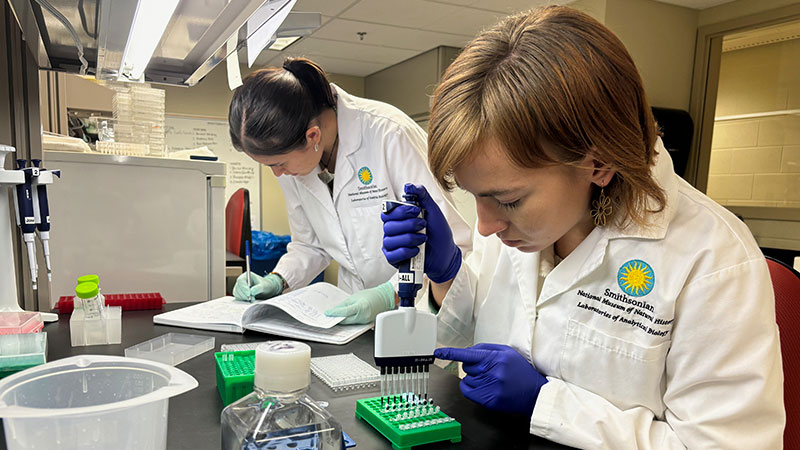
- Internship Period: 10-weeks, Summer 2025
- Virtual or in-person: Remote/virtual
- Stipend: $7,000 honorarium
This opportunity is for a communications-focused graduate student to engage and contribute to NOAA Ocean Exploration marine archaeology activities and digital communication priorities. The student will work with NOAA Ocean Exploration archaeologists and communications staff to better understand significant historical sites from past and current maritime heritage-focused expeditions supported or conducted by the office with the primary aim to help create public-facing content for NOAA Ocean Exploration’s new archaeology web page. Additional activities may include historical research for other communication, education, or outreach products and related historic preservation activities.
Key activities and learning outcomes:
- Write web content and co-design NOAA Ocean Exploration’s archaeology webpage. No access to or experience with web-design software is needed. Basic knowledge of Microsoft software (Word, Excel, etc.) and the Google suite are needed.
- Conduct historical research, gather supporting documents and imagery, and write public-facing content for Pacific-focused maritime heritage fieldwork.
- Learn about the NOAA Ocean Exploration program, archaeology, and communications portfolios alongside a diverse team of NOAA Ocean Exploration archaeologists and communications staff.
- Communicate internship outcomes through written reports and oral presentations, including at the 2025 NOAA Ocean Exploration Internship Symposium.
- This will be a remote, virtual internship, using video conferencing to communicate with mentors. Opportunities for professional development include workshops, seminars, conferences and publications.
This opportunity is ideal for:
- Graduate students or someone who has recently completed a graduate-level degree.
- Applicants with a background or interest in maritime studies, maritime archaeology, maritime heritage, and/or science communication.
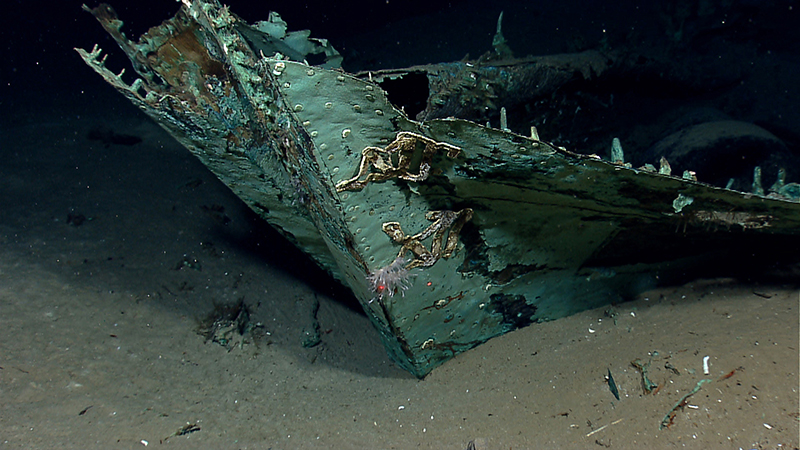
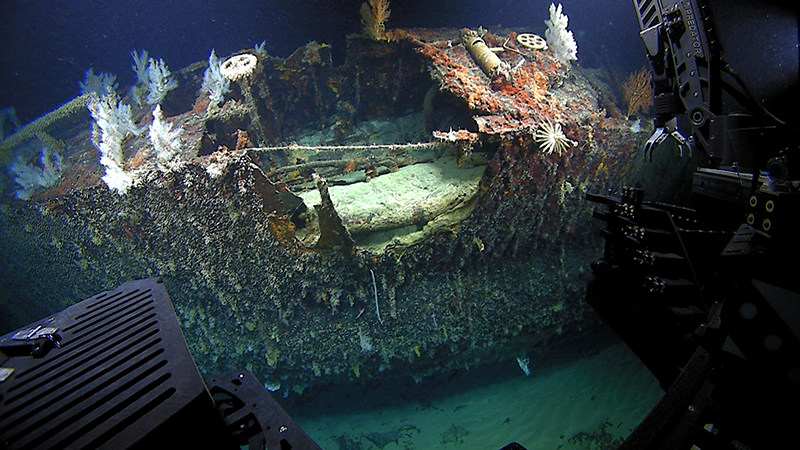
- Internship Period: 10-weeks, Summer 2025
- Virtual or in-person: Remote/virtual
- Stipend: $7,000 honorarium
This opportunity is for a communications intern to contribute to the communication and outreach priorities of NOAA Ocean Exploration and NOAA’s Office of National Marine Sanctuaries. Under supervision and guidance from staff from both offices, the intern will assist in developing communications products focused on the incorporation of Hawaiian language in communicating about the value and importance of the deep sea and the exploration work being conducted on NOAA Ship Okeanos Explorer in the central Pacific Ocean as part of the Beyond the Blue campaign.
Specific deliverables will be determined based on NOAA needs and the intern’s interests and may range from products focused on writing, art, video production, Hawaiian studies, and more. Potential project ideas include the development of one major communications product such as a multimedia-rich web feature focused on Papahānaumokuākea Marine National Monument, a series of web stories, and/or a series of “print” products such as posters or postcards.
The intern may also contribute to other activities related to active, ongoing expeditions during the 2025 Okeanos Explorer field season, such as helping to draft social media posts or web stories or co-hosting live interactions with the ship and participants on shore.
Key activities and learning outcomes:
- Develop a diverse portfolio of communication products that can be used for future educational and professional endeavors.
- Learn science communication principles and apply local Hawaiian knowledge to enhance public awareness of research in the Pacific Islands region.
- Work alongside a diverse team of local Hawaiian specialists, communications and outreach staff, and marine scientists.
- Co-produce engaging content to share with broad, public-facing audiences and local Hawaiian communities.
- Communicate internship outcomes through written reports and oral presentations, including at the 2025 NOAA Ocean Exploration Internship Symposium.
- This will be a remote, virtual internship, using video conferencing to communicate with mentors. Opportunities for professional development include workshops, seminars, conferences and publications.
This opportunity is ideal for:
- Current or recently graduated undergraduate or graduate-level students.
- Applicants with a background or interest in science communication, Hawaiian Studies, art, video production, and/or writing.
- Applicants who have a foundational understanding of marine science concepts.
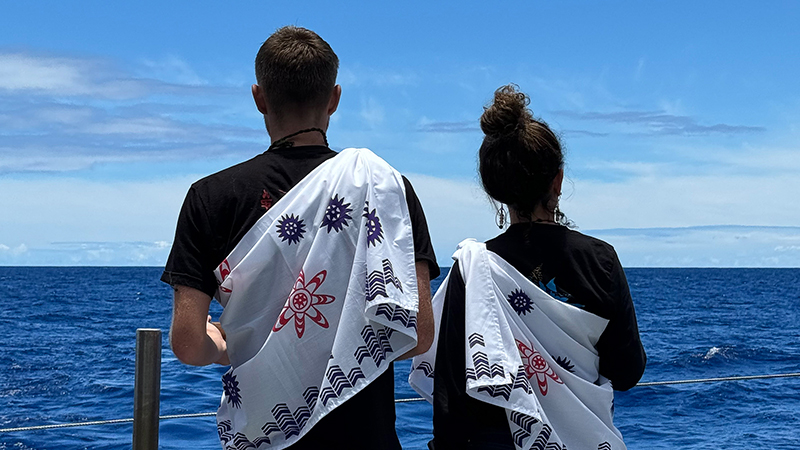
- Internship Period: 2-4 weeks, expedition dates TBA
- Virtual or in-person: NOAA Ship Okeanos Explorer, Hawaiʻi/Pacific Islands region
- Stipend: $208/day plus travel reimbursement
This opportunity is for at-sea training in seafloor mapping and exploration aboard NOAA Ship Okeanos Explorer. With only 26.1% of our world ocean’s seafloor mapped to modern standards, seafloor mapping is a national and international priority. Contributing to seafloor mapping efforts is an integral part of NOAA Ocean Exploration’s mission, providing critical bathymetric data needed to achieve a baseline understanding of previously unexplored areas. As part of the team conducting mapping operations, explorers-in-training will be directly responsible for making sure that incoming data accurately represents the true seafloor. This includes monitoring data acquisition, defining instrument and sound speed processing settings, and cleaning raw data with support from experienced ocean mappers. Beyond seafloor mapping, explorers-in-training will also gain tangible skills in the use of geographic information system (GIS) software and data management, and experience what it’s like to live aboard a research vessel for multiple weeks at sea 200–700 nautical miles from shore, working with a team of colleagues from all different backgrounds.
Expedition dates & locations:
The 2025 Okeanos field season will take place in the central Pacific Ocean region as part of the Beyond the Blue campaign, requiring travel to/from Hawaiʻi, USA or other areas of the Pacific Islands region. Tentative expedition dates, days at sea (DAS), and port locations for 2025 Explorer-in-Training opportunities are listed below. Participants will also need to be available at least 2 to 3 days before and after the expedition for travel and mobilization/demobilization.
- EX2506: July 22 - August 11 (21 DAS), Palau - Guam
- EX2507: August 20 - September 4 (14 DAS), Guam - Guam
- EX2508: September 12 - October 8 (27 DAS), Guam - Palau
- EX2601: October 16 - November 20 (28 DAS), Guam - Honolulu
Note that the expedition schedule is subject to change due to a variety of factors including federal budget appropriations, weather, mechanical issues, and other logistical challenges. Final expedition dates and locations, as well as any changes in the expedition schedule, will be communicated with selected applicants. You can follow along and check for updates on the NOAA Ship Okeanos Explorer field season here and watch live video coverage of expeditions here.
Key activities and learning outcomes:
- Gain an understanding of shipboard exploration and research operations, and develop scientific, collaborative, and outreach communication skills.
- Monitor data acquisition from multibeam sonars, perform preliminary data processing, and create mapping products for live, real-time displays.
- Experience life at sea on a federal research vessel, including sharing a berthing space with others working on the vessel and coordinating shared living and working space with other scientists and mariners who may work different watches, shifts, or have different duties.
- Stand an 8-hour watch every day at sea, working alongside experienced mapping watchleads. Watches are rotational and working hours may include overnight shifts. Time outside of the intern’s 8-hour watch shift may be spent networking with scientists and other ship personnel and includes personal time for sleep, meals, exercise, etc.
- Participate in other shipboard ocean exploration operations including the use of oceanographic sensors (e.g., CTD, navigational) and sampling techniques (e.g., water column and eDNA sampling) depending on the expedition mission objectives.
- This internship is focused on seafloor mapping and does NOT involve participation on expeditions involving remotely operated vehicle (ROV) operations.
This opportunity is ideal for:
- Undergraduate or graduate-level students or recent graduates.
- Applicants with a strong interest in ocean mapping, oceanography, GIS, field work, expedition operations, and/or data management.
- Applicants that are comfortable working and living in close quarters, being isolated with the mission team at sea for up to four weeks with no port calls.
- Applicants with a strong attention to detail and ability to closely follow standard operating procedures.
Ship environment & safety:
- The ship is a working vessel and conducts 24-hour mapping operations. Participants are expected to work 8-hour shifts daily, including on weekends, and shifts may include working late hours or overnight.
- The ship is home to a 49-member crew consisting of professional mariners, engineers, stewards, NOAA Corps officers, and science staff. Participants will be living and working in shared spaces. Accommodations include shared 2 to 4-person bunk rooms and shared bathrooms. Participants will also have access to common areas including the mess hall/galley (cafeteria), library, lounge, gym, and outdoor deck spaces.
- Breakfast, lunch, and dinner are served daily at specified times. Snacks are accessible around the clock. WiFi is available throughout the ship for personal use and connecting with people on shore.
- NOAA Ship Okeanos Explorer often travels through international waters and may use U.S. and international ports. Participants are required to possess a valid U.S. passport at the time of their expedition. NOAA Ocean Exploration or UCAR CPAESS are unable to reimburse or provide assistance for passport application or renewal fees for participants.
- Participants are required to complete the NOAA Harassment Prevention and Reporting Training and abide by NOAA codes of conduct and office/ship policies while onboard the Okeanos Explorer. Alcohol, drugs, and weapons are not permitted onboard the ship.
- Living aboard the ship may include adverse weather, seasickness, and varying stability/motion depending on sea state. Participants should be able to step over a 24-inch high door sill, walk on slippery or uneven walking surfaces, climb stairs, carry 15 lbs, don a survival suit in less than one minute, ascend/descend a rope ladder, hear the ship’s general alarms.
- Participants will be required to complete an application for medical qualification to sail on a NOAA Ship, including disclosing medical conditions, medications (prescription and non-prescription), known allergies, and major surgeries, hospitalizations, and emergency room visits.
- Participants will receive a detailed safety briefing at the start of the expedition and are expected to participate in weekly safety drills for emergency preparedness, including for potential abandon ship, man overboard, fire, or other emergency situations.
- 24/7 access to a limited medical facility and trained medical personnel, as well as shore-side medical advice and support for minor to emergency medical issues.
- Swimming off the ship is not allowed.
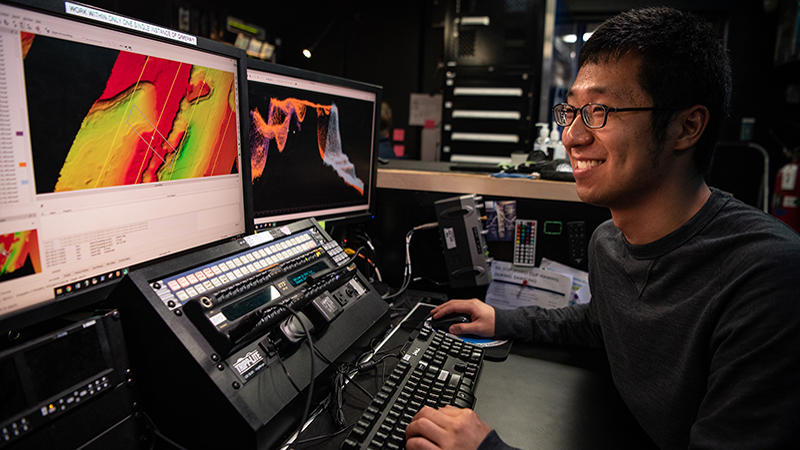
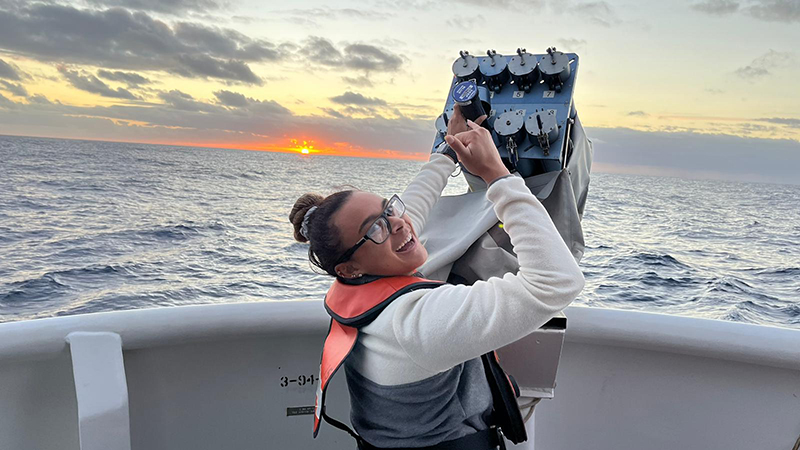

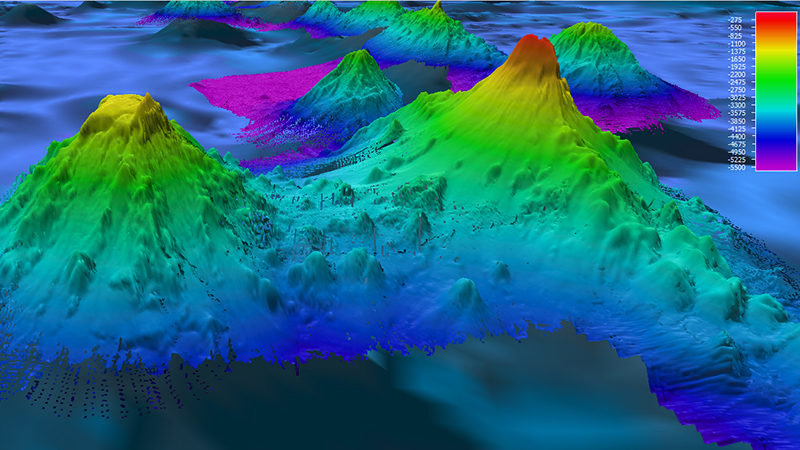
Eligibility & Application Requirements
Eligibility
- U.S. citizenship
- Must be at least 18 years of age by internship or expedition start date
- Students (undergraduate or graduate) who are currently enrolled in or recently graduated (within one year of graduation date) from an accredited academic institution
- Degree, major, or intent to major in a field relevant to NOAA Ocean Exploration’s mission, including but not limited to: STEM (science, technology, engineering and math) fields, social sciences, communications, education, business operations/administration, and ocean policy/management
- Willingness to learn and follow office policies and/or shipboard standard operating procedures
- Clearance of a Special Agreement Check (SAC) upon acceptance into the program
- Valid U.S. Passport (2-4 week, expedition-based seafloor mapping internship only)
Visit the Frequently Asked Questions (FAQs) section to learn more about the Explorer-in-Training program eligibility requirements, including U.S. citizenship, who qualifies as “recently graduated”, and Special Agreement Check (SAC clearances).
Application Requirements
- Submit online application form, including the following:
- Current resume or curriculum vitae (CV). (Maximum 2 pages).
- Note: If you have never created a resume or CV before, see resources and guidance from the Purdue Online Writing Lab.
- Required short answer response to each of the following prompts:
- Tell us where you are in your academic/professional path, and how ocean exploration fits with your long-term career and educational goals. (Maximum 250 words)
- The Explorer-in-Training program is intended to be an experiential learning opportunity. For the internship theme you are applying for, what specifically interests you in the opportunity and what skills and/or experiences are you hoping to gain? (Maximum 250 words)
- Describe a situation when you had to overcome a challenge or step outside of your comfort zone. How did you get through it and what did you learn? (Maximum 250 words)
- Question #4 has been removed from the application requirements. Applicants are no longer required to answer Question #4 in future submissions. Any responses to Question #4 already included in previously submitted applications will not be considered during the review process.
- The following question is required for applicants to the 10-week Beyond the Blue Campaign Science Communications internship only: Explain how you hope that your passion for and familiarity with local Hawaiian knowledge and language will connect to local communities through this role. (Maximum 250 words)
- Contact information for at least one professional reference (professor, advisor, work supervisor, mentor, etc.).
- Note: Professional references should be able to speak to your character and your professional and/or academic background. Professional references will only be contacted for finalists during the final phase of candidate selection (i.e., those invited to interview with the selection team). Please ask your references for permission to include their information before final submission of your application. If necessary, references will be contacted by email and asked to complete a short questionnaire.
Important Dates
| Application Period | December 1 – January 31 |
|---|---|
| Application Review | February 1 – March 15 |
| Finalist Interviews | March 15 – April 15 |
| Notifications | May 1 |
| 10-Week Summer Internship Period | Late-May to early-August (dates are flexible) |
| Expedition Schedule | Varies year-to-year, with several mapping expeditions typically available in spring, summer, and fall. |
*Note: The expedition schedule is subject to change due to a variety of factors including federal budget appropriations, weather, mechanical issues, and other logistical challenges. Final expedition dates and locations, as well as any changes in the expedition schedule, will be communicated with selected applicants.
Additional Info & Resources
Frequently Asked Questions (FAQs)
- Follow the guidelines: Make sure you meet all eligibility and application requirements, and keep your resume/CV and essay responses to the required word or page limits.
- Tell us why you are interested in Explorer-in-Training: Demonstrate that you have read about our organization and understand the goals and responsibilities of the specific internship theme you are applying for. Be sure to highlight any relevant skills and experiences, and tell us how this opportunity will help you advance in your future career and educational goals.
- Showcase your unique value: We receive many applications for Explorer-in-Training each year. Help us see why you are the best candidate for our program and organization. Tell us about your interests and passions, your personal journey, what you bring to the team, and how you hope to contribute to NOAA Ocean Exploration’s goal of building a diverse, inclusive, and safe community of people engaged in deep ocean exploration.
- Polish your resume and seek feedback: There are many online resources with guidance on putting together professional resumes/CVs, applications and preparing for interviews. Many campuses and communities offer free services to help proofread essays, review resumes, and practice for interviews. Ask your professors, supervisors, mentors, and colleagues to review and provide feedback on your application materials.
- EX2506: July 22 - August 11 (21 DAS), Palau - Guam
- EX2507: August 20 - September 4 (14 DAS), Guam - Guam
- EX2508: September 12 - October 8 (27 DAS), Guam - Palau
- EX2601: October 16 - November 20 (28 DAS), Guam - Honolulu
NOAA Ocean Exploration Resources
NOAA Ocean Exploration Website
NOAA Ocean Exploration Expeditions
About NOAA Ship Okeanos Explorer
Beyond the Blue: Illuminating the Pacific
Previous Student Explorers
Exploration Tools
Ocean Exploration Facts
Other Student Opportunities
Explore a range of internships, fellowships, volunteer positions, and student opportunities available through NOAA, other federal agencies, and NOAA Ocean Exploration partner institutions offering a range of eligibility requirements, application and internship timelines, and focus areas — find the one that best fits with your interests and goals!
NOAA Student Opportunities Database
Finding a Career at NOAA
NOAA Ocean Exploration Student Opportunities
UCAR CPAESS Internships & Postdoctoral Fellowships
USAJobs Federal Internship Portal
Ocean Exploration Trust (OET) Science & Engineering Internship
University-National Oceanographic Laboratory System (UNOLS) Early Career Programs
Science, Technology, Engineering And Math Student Experiences Aboard Ships (STEMSEAS)
Schmidt Ocean Institute Student Opportunities
OceanX Young Explorers Program
Contact
If you have any questions, need guidance, or experience technical difficulties, please contact the NOAA Ocean Exploration Internship Program Coordinator at oer.internships@noaa.gov.
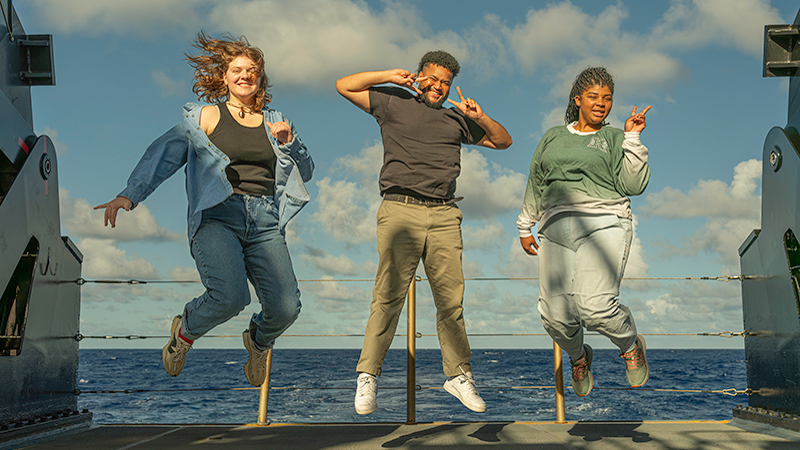
Published November 19, 2024
Updated January 21, 2025